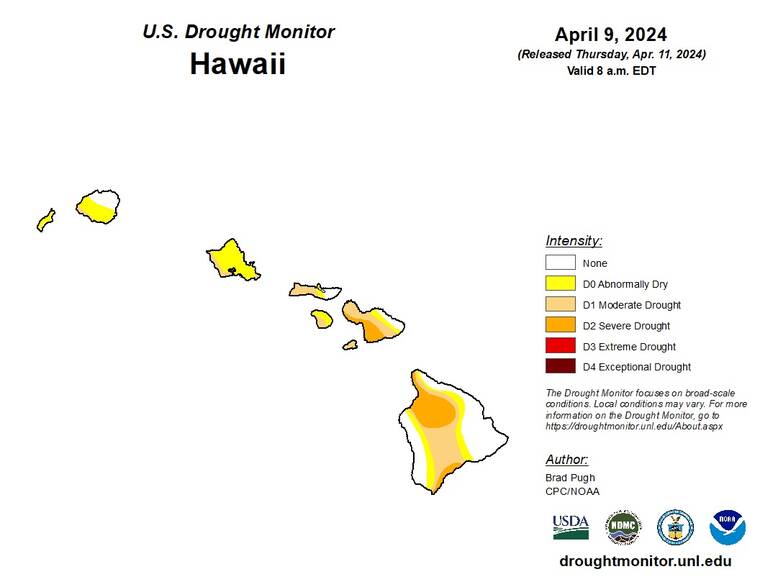Drought has arrived early to the Hawaiian Isles, signaling a potentially fiery summer of wildfires.
The National Interagency Fire Center in its four-month outlook Opens in a new tab said Hawaii’s fire potential remains normal this month, then transitions to above normal for leeward areas from May to July.
Drought coverage and intensity increased by late March, the outlook noted, and persists on Kauai, Maui and Hawaii island.
National Weather Service meteorologist Derek Wroe said while there was some decent rainfall on New Year’s Day and in early January, there has not been much for the leeward sides.
“We’re starting out dry,” he said, noting no significant departure from typical tradewind weather in the forecast. “That means continued dryness of leeward areas. It’s safe to say there will be elevated fire risk for leeward areas, earlier than we typically see.”
The latest U.S. Drought Monitor shows about 17% of the state is already in severe drought, while 25% is in moderate drought.
The severe drought is on the leeward side of Maui and the Waikoloa area of Hawaii island.
A strip along Leeward Oahu is in moderate drought, while the rest of the isle is abnormally dry.
The NWS’ latest precipitation summary for Hawaii said March is normally one of the wettest months but that rainfall totals fell short this year.
There was heavy rainfall from March 3 to 8 due to a low-pressure system.
A front that passed across the island chain March 13 also resulted in periods of heavy rain and minor flooding along Oahu’s Waianae range, and rainfall of 1 to 2 inches covered a swath from Waianae to Wahiawa.
But rainfall totals for March were below average at most gauges on Kauai and Oahu.
On Oahu, many totals were below 50% of average, and the Waipio rain gauge had its lowest March total since 2008, according to the summary.
Forecasters expect El Nino conditions to transition to neutral and then to La Nina patterns in the summer, but impacts for Hawaii remain to be seen.
The peak of dry season is usually August, according to Wroe, but wildfires are now typical year-round.
All the vegetation that developed during the rainy season potentially becomes fuel.
“It doesn’t take that long for grasses to dry out,” he said. “Even though our primary fire season is summer into early fall, things can change pretty quickly, and you’ll see parts of the islands drying out much quicker.”
According to the Pacific Fire Exchange, Hawaii over the past decade has experienced an average of over 1,000 ignitions per year on main inhabited isles.
No red-flag warnings were issued in March, although gustier, westerly and easterly wind events occurred throughout the month, the National Interagency Fire Center noted. Satellites detected several smaller fires in March.
The Honolulu Fire Department’s log showed wildland fires occurred in Waianae, Nanakuli, Kapolei, Waipahu and Pearl City in just the first week of April.
For the next four months, average temperatures in Hawaii are expected to be near to above normal, while rainfall will generally remain below normal.
During the transition from wet to dry season, drought coverage and intensity are likely to expand.
Therefore, the outlook forecasts “above normal significant fire potential” from May to July across leeward areas “due to drought expansion and more available or flammable live fuels.”
“Wind events will be a wildcard,” the outlook said.
GETTING READY FOR WILDFIRES
Hawaii Wildfire Management Organization is offering two virtual wildfire preparedness webinars for residents, with tips on how to protect your home, yard and family from wildfires. The webinars are free, but registration is required to receive a Zoom link.
>> 5:30-6:30 p.m. Thursday; register at tinyurl.com/RSGApr2024 Opens in a new tab.
>> Noon-1 p.m. May 1; register at tinyurl.com/RSGMay2024 Opens in a new tab.
>> For more information, contact admin@hawaiiwildfire.org or 808-885-0900.

